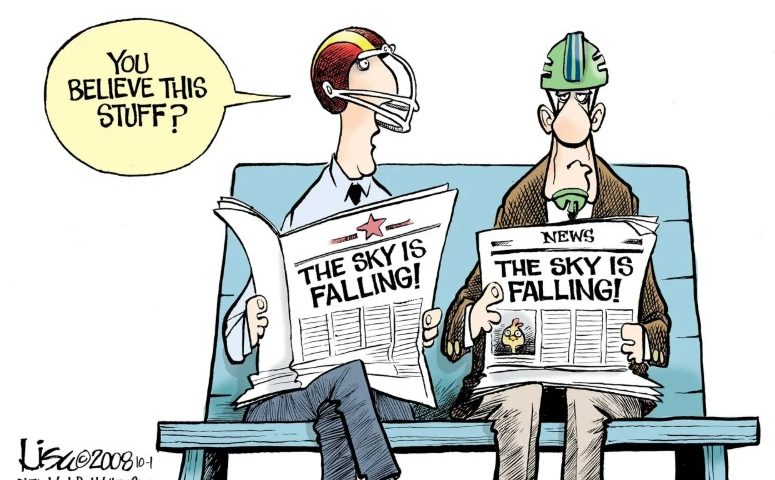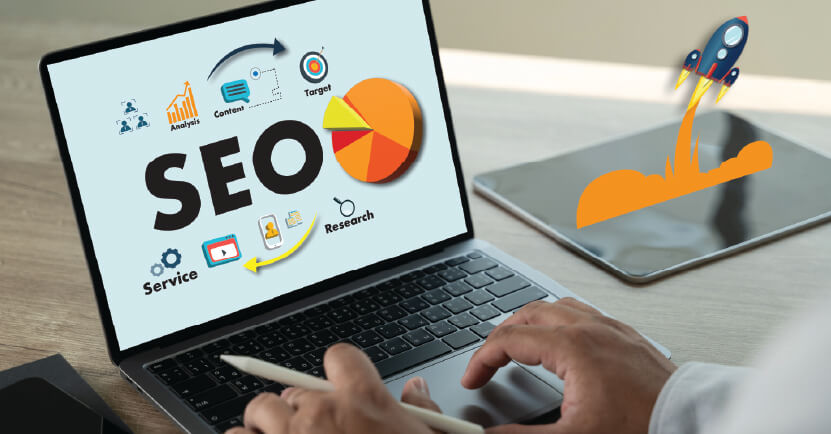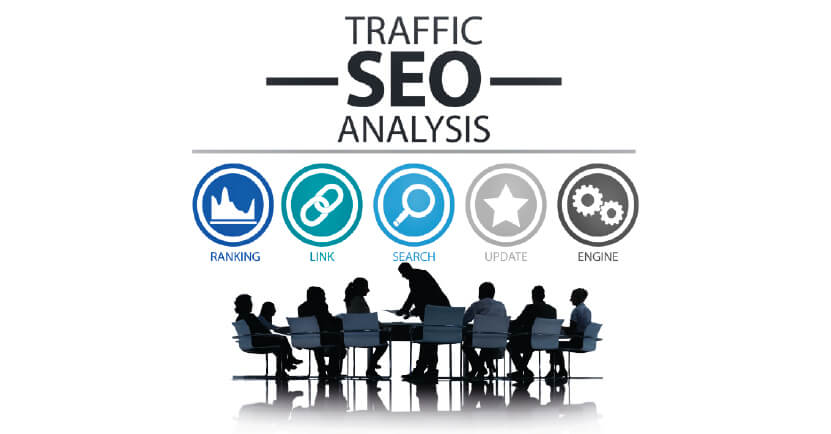- 0243394034
- info@centralcoastseo.com.au
- Google 1st Pages Guaranteed in Writing.
The Great Decoupling | Why Omnichannel Marketing is the Future

The Great Decoupling | Why Omnichannel Marketing is the Future
I launched my first website on August 14, 2000, nearly 25 years ago. Back then, when most websites were built in ‘Flash,’ (it’s true!) all you needed to have from an SEO perspective was a load of keywords stuffed in somewhere (err… everywhere!), and a sprinkling of backlinks, and: voila! Your site was ranking in Google! And for a time, a glorious, fragmented moment in history, that’s all you needed to get the phone to ring.
But as anyone who has worked in digital marketing as long as I have will tell you, nothing stays the same in search for long.
Let me give you an example of this, so you not only comprehend how quickly things can change, but so you can heed the words that follow and make sure you’re protected against what’s coming.
Now, there are many, many examples I could use here, from Altavista to MySpace and everything in between, but let’s stick with something I’ve already mentioned: Flash. Because there was a time when Flash was ubiquitous in the web industry. And then it died a slow and painful death. And clients of mine at the time who didn’t head my advice on the topic, suffered terribly because of not getting ahead of the changes that people in the industry (like me) knew were coming.
Flash and Google Search | A Real World Example of Change
As I mentioned above, back when I launched my first website on 14 August 2000, it was built entirely in Flash. And in those early days of the world wide web, Flash sites were EVERYWHERE. Visually stunning, they were the web builder’s tool of choice. And by extension, was the platform SEO strategies had to be built on.
But by the mid-2,000s Flash sites were becoming less and less visible in Google search. I remember this as I was working as General Manager and Head of Search at a leading SEO agency in Sydney at the time (this being before I launched my own company), and I repeatedly told clients who had Flash websites, that: “Your Flash website looks amazing, but it’s going to be invisible to Google in the near future, so you need to get a new website built.”
But most clients didn’t want to listen. Of course they didn’t! Their website was still there when they searched for it on Google, so they ignored my well-intentioned prognostication. Thinking I was just doing a ‘cash grab’ to get them to build a new website when they didn’t need one.
Except I wasn’t. I was telling them the future before it slammed into them like a freight train.
Flash forward to 2007 and Google stopped showing Flash websites in their search results completely. But it wasn’t until 2008 when Google themselves advised against using Flash for primary navigation or content.
The moral of the story? Don’t wait for the train to run you over to get off the tracks…
Change is the Only Constant in Search
Every few years Google rolls out a major algorithmic change, and every time it happens, there’s a collective gnashing of teeth from business owners everywhere because: “The sky is falling!”
I’ve heard it with Panda, Penguin, Hummingbird, RankBrain, BERT and The Quality Content Update to name just a few. And now, with AI Overviews and Generative Search becoming the norm, the bile is rising in the back of business owners’ throats, and panic is in the air.
But here’s the twist:
Is the Sky Actually is Falling?
Well, that depends on your perspective, doesn’t it? And more importantly, it depends on how well your business can zig, where it used to zag. Because the sky is still there. Fear not on that score.
But it’s certainly raining.
What is “The Great Decoupling”?
The Great Decoupling refers to the separation of organic search traffic from traditional click-through behaviour. In plain English: users are now getting answers without ever visiting your website. Thanks to AI Overviews, Google’s Search Generative Experience (SGE), and zero-click results, people are consuming more content on Google than through Google.
- AI Overviews summarise your content: Google’s new AI-generated answers pull from top-ranking content and present a comprehensive overview directly in the SERP, often without requiring users to click through.
- Featured snippets provide direct answers: Snippets that used to be golden real estate for clicks are now reducing the need for users to visit your page.
- Voice assistants like Google Assistant or Siri bypass the screen entirely: They provide direct answers by scraping structured data and context from top-ranking pages.
The implication? If your business depends heavily on organic traffic from informational queries, you may begin to notice fewer visitors to your site, even if you still rank well. And that thought can be scary as hell.
The Yellow Pages Analogy
I’m old enough to remember a world before Google. Back then, marketing was simple. All you had to do was:
- Drop $75,000 or $50,000 on a full-page or half page ad in the Yellow Pages.
- Wait for the phone to ring. Which it did. All year long.
It wasn’t sophisticated—but it worked like a treat. You paid once and reaped the benefits all year.
Then Google came along in 1997/98 and consumed the world, and suddenly, your phone didn’t ring unless you ranked on Page 1. And for the last 20 years, Google has been the front door to the internet.
SEO almost overnight became the cornerstone of digital marketing. And here’s the good news: despite the A.I. revolution, it still is.
But we’re on the cusp of a change as profound as the Yellow Pages-to-Google transition and you need to be on the right side of the changes.
The Rise of Omnichannel Marketing
In the last decade, I’ve been telling clients one thing consistently: a robust digital marketing strategy requires more than one channel to be successful. Because with only one channel (SEO for example, PPC for another) your business is exposed. Because what if the people who own that one channel (Google in this case) change the rules, or up the prices so much that using that channel becomes an impossibility?
Which of course Google does. OFTEN. And with no thought of the negative implication the changes have on website owners downstream of the changes.
Don’t put all your eggs in the SEO basket.
It should be common sense, but if you’re relying solely on organic rankings for your leads, you’re dangerously exposed. Because if Google sneezes, your business catches a cold.
Yes, SEO is still the cheapest and most effective form of digital marketing for anyone, anywhere. Especially if you’re on a tight budget. But the days of just doing SEO are now a thing of the past. That’s the lesson here.
What is Omnichannel Digital Marketing?
Omnichannel marketing is the strategic use of multiple digital channels—working in concert—to reach, engage, and convert customers. These aren’t isolated tactics; they form a cohesive ecosystem. These include (but are not limited to):
- Google Ads/PPC: Get immediate visibility at the top of the SERPs, even if your organic rankings are falling. Even PPC has taken a hit in the world of A.I. overviews. But Google’s profitability is built on PPC, so expect them to—IN THE VERY NEAR FUTURE—protect their PPC cash-cow by putting their A.I. overview IN WITH THE A.I. OVERVIEW. Because right about now even the PPC results are slowly dying. And Google will move heaven and earth to stop that from happening.
- Facebook & Instagram Ads: Tap into demographic and behavioural targeting with high visual impact.
- YouTube Ads: Video remains one of the most powerful and underpriced platforms for engagement and storytelling. Not right for every business but may be right for yours.
- LinkedIn Ads: Especially powerful for B2B brands and service providers.
- ChatGPT-style content integration: Leveraging AI-generated content for FAQs, chat support, and knowledge bases can enhance user experience.
- Email Automation: Still one of the highest ROI channels, particularly when used for nurture sequences and cart abandonment recovery.
- SMS Marketing: Regular EDM (Electronic Direct Mail) campaigns can get open rates north of 90%, making this a powerful retention and reactivation tool.
- Website Retargeting: Serve ads to people who visited your site but didn’t convert.
- Organic Social Media: Long-term brand building and community management.
Each channel has a role. But their power is exponential when used together.
Why is this Important Now?
- Google’s AI overviews are reducing click-throughs: Even if your content is used in the overview, there’s no guarantee of a click.
- Consumers are researching on social platforms: TikTok and Instagram are now being used as discovery engines, especially by younger demographics.
- Voice search offers answers: It’s here and it’s growing.
- AI chatbots summarise your site in seconds: People might never visit your homepage—they’ll talk to a bot trained on your content instead.
The Future of SEO in a Generative World
Make no mistake—SEO is not dead. Despite the cries from the people in the cheap seats.
But it is evolving. In the age of AI, SEO is no longer just about:
- Meta tags (still a must have, but of no benefit in SEO)
- Keyword density (irrelevant now)
- Backlink profiles (though still SUPER important, as your back link profile drives 85% of the rankings your website get)
Instead, it’s about:
- Semantic search optimisation: Structuring content around intent and meaning, not just keywords.
- Entity-based SEO: Building recognition of your brand, products, and people as identifiable, contextual entities within Google’s knowledge graph.
- Structured data markup: Feeding Google context about your pages through schema.org.
- AI content augmentation: Creating supporting content at scale to build topical depth.
- Topical authority across clusters: Developing content silos or topic clusters to show expertise and earn trust.
SEO now intersects with branding, UX, content strategy, and AI. It’s a holistic discipline. And it takes an EXPERT to navigate this ever-growing minefield.
Which is, of course, where Central Coast SEO comes in.
From Search Engine to Answer Engine
Google’s transition from a search engine to an answer engine represents a paradigm shift. Your website’s job is no longer just to attract clicks—it must establish authority.
To adapt, your site must:
- Provide immediate value: The page should answer questions above the fold.
- Establish E-E-A-T (Experience, Expertise, Authoritativeness, Trustworthiness): Google values real-world experience and subject matter expertise.
- Encourage citations by others: If AI tools are trained on the web, then being cited by others increases your content’s reach and perceived authority.
You’re not just fighting for rankings—you’re fighting for recognition and reference.
Why Generative Search Doesn’t Mean Armageddon
The impact of generative AI is real, but it’s not necessarily negative. In fact, it can amplify your digital presence:
- AI summarises your content: Even if users don’t visit your page, your insights can be quoted or referenced.
- AI rewards clarity, depth, and relevance: If your content is the best, it will get chosen as the source.
- Brand mentions matter more than ever: The more your brand is seen—even in zero-click formats—the more trust is built.
In short, presence triumphs over position. It’s not about Page 1 anymore (though you still need that); it’s about being everywhere your prospects are.
What Small Business Owners Should Do Now
Here’s the practical takeaway: diversify now, before you’re forced to.
Spread your budget across:
- SEO: Search Engine Optimisation is still essential for long-term growth and brand building.
- Google PPC: Provides predictable, scalable lead generation.
- Facebook/Instagram Ads: Ideal for retargeting and demographic targeting.
- YouTube Ads: Fantastic for storytelling and brand lift.
- Retargeting: Keep your brand top of mind for warm prospects.
- Email automation: Re-engage and nurture leads into customers.
- Organic social: Show your brand personality and engage your community.
This doesn’t mean abandoning SEO. Far from it. SEO remains your cheapest and best bet for getting the phone ringing. However, it shouldn’t be your ONLY form or marketing. Rather, it should be the tentpole that supports your digital marketing, with all the other (complementary) tactics working in concert with it. That way you are protected from algorithm shocks and the winds of change.
Don’t Panic!
To quote the late, great, Douglas Adams: “Don’t Panic!” Because yes, AI is the most disruptive force in marketing since Google itself—but we’ve been through this before:
- When mobile overtook desktop.
- When HTTPS became mandatory.
- When voice search arrived.
- When social media changed discovery.
Each time, the rules changed. And each time, smart businesses adapted—and thrived.
The businesses that survive are those that embrace change as a strategy, not just a necessity.
Make sure yours is one of them.
Central Coast SEO | Your Partner in the Omnichannel Age
At Central Coast SEO, we’ve been riding the digital waves since the days of Netscape Navigator and dial-up modems. We’re not just SEO experts—we’re digital strategists.
We help clients across Australia develop marketing strategies that work in today’s world:
- From SEO to PPC.
- From Facebook to Instagram.
- From Retargeting to Google Display Ads.
- From content strategy to an omnichannel rollout.
So, if you’re worried about AI, generative search, or what’s around the corner, let’s talk.
Call Central Coast SEO Today!
Call me direct on 0425 204 887, and let’s speak business owner to business owner. And together, we’ll build a digital marketing strategy to future proof your business. Because in 2025 and beyond, success lies in marketing across multiple channels—simultaneously.
The Great Decoupling isn’t the end. It’s just a new beginning. And isn’t that how empires always start?


















